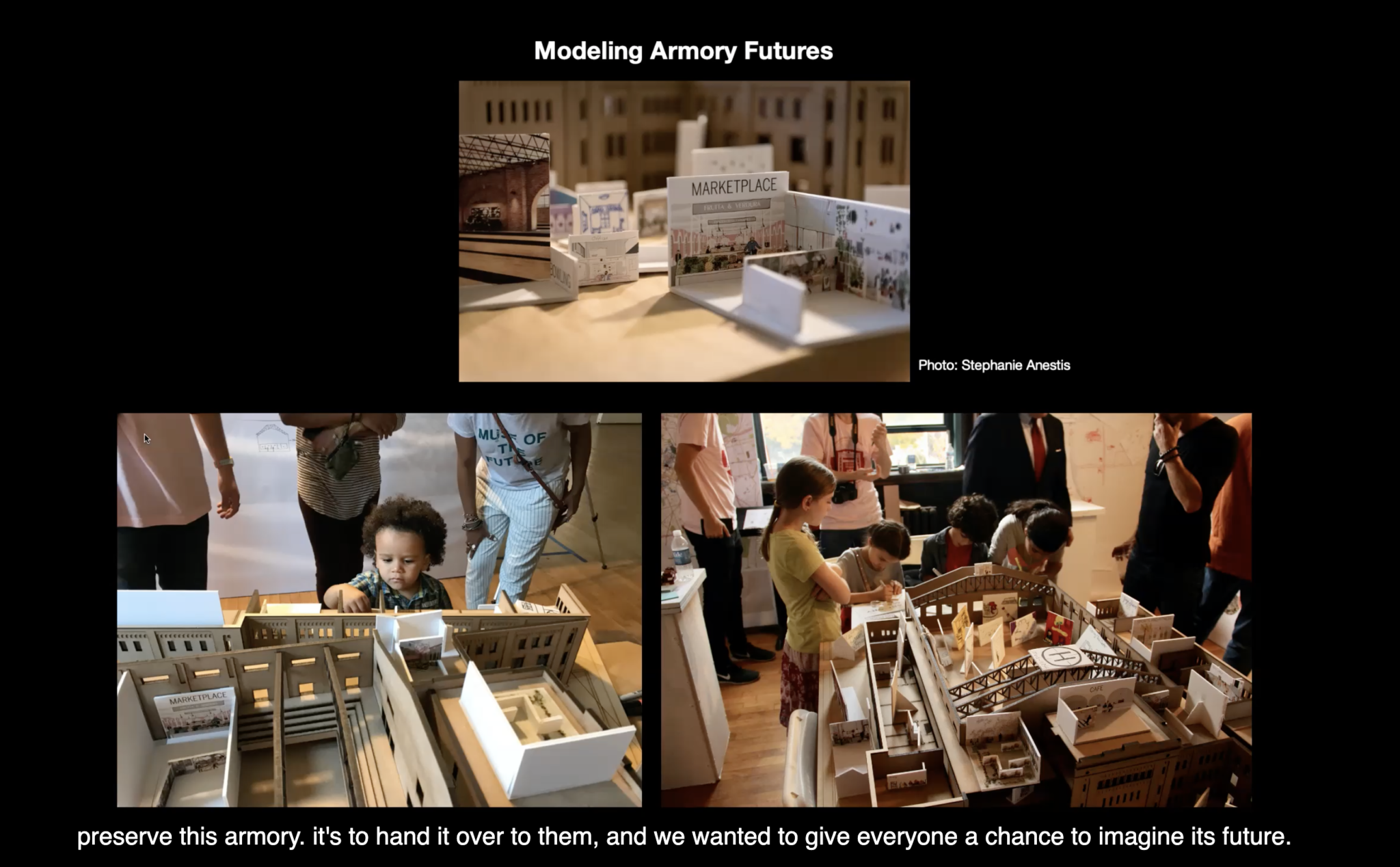Goffe Street Armory inspires discourse on New Haven’s civic infrastructure
Yale urbanism professor Elihu Rubin presented ideas for the repurposing of the deteriorating landmark in a webinar hosted by the New Haven Free Public Library.

Mia Cortés Castro, Contributing Photographer
After years of struggling with deterioration and disrepair, the Goffe Street Armory is inspiring conversations about repurposing civic infrastructure while maintaining its history.
Associate professor of architecture Elihu Rubin ’99 led a webinar earlier this month, discussing the Armory’s role as a piece of important civic infrastructure in New Haven. Rubin also spoke to the News about renovating the Armory to make it a more usable space.
“The Goffe Street Armory offers an opportunity to explore New Haven’s history through the lens of a very significant building,” said Rubin. “My interest in it historically and architecturally came from realizing or seeing this potential, to adapt the building while keeping its history. We can take a broad view of what constitutes civic infrastructure, including spaces that facilitate all varieties of gatherings and opportunities for people in the city.”
The presentation was a part of the New Haven Free Public Library’s “Democracy in America” series, which is a collaboration with the Public Humanities at Yale program. The webinar served as a taste of a larger conversation about the importance of preserving historic buildings like the Armory and how these buildings can increase accessibility to New Haven’s history.
Built in 1930, the Goffe Street Armory used to house the 102nd regiment of the National Guard and the Second Company Governor’s Foot Guard, and later served as a storage space for the National Guard’s armaments and other equipment and as a general community space.
After being abandoned by the National Guard in 2009 and with the city taking over, the Armory currently serves as a storage space. Its backyard houses the Armory Community Garden.
Rubin both presented during the webinar conversation and discussed in his interview with the News the different ideas that have been brought forth about repurposing the armory, including spaces for both nonprofit and for-profit organizations to launch their projects. He also mentioned the benefits this repurposing would have in bringing the community together.
During this discussion, Rubin made it clear that the Armory should remain a public space, though he did mention the need for “anchor tenants who will agree to make a long term commitment in the viability of the space.” He also presented images of sketches made by community members illustrating the use of the Armory as a public space.
“We can’t rely on private real estate for all of these decisions about the future of the city,” added Rubin. “There needs to be a place for a strong public sector initiative, but we must also recognize that the public sector can’t do it all on its own, that it will require a kind of partnership.”
The repurposing itself, however, presents a great community bonding opportunity. With all of the ideas being discussed about what the purpose of the Armory should be, there are open conversations going on about the priorities of the community.
With the potential of a new space, the community is inspired to get together and think of innovative ways to make good use of such a large area. Additionally, the Drill Hall — the large, open space in the center of the building — would be one of the only large indoor public spaces available for creative events.
“The ‘Democracy in America’ series is based on the old idea of the Town Hall — an opportunity for neighbors and strangers to come together to discuss important matters of mutual interest,” said American Studies professor Matthew Jacobson, who moderated the conversation. “We have too few of these opportunities. I hope that from this conversation, they understand what is at stake in preserving and repurposing the city’s only ‘big room,’ as Rubin put it. It’s a site of significant potential for the entire community.”
Rubin said that older New Haven residents and those who were able to take advantage of the Armory’s space in the past have especially expressed excitement at the possibility of its repurposing and maintenance.
Community members hope to preserve this piece of history while still celebrating the new activities the renovation will allow. In past years, the Armory used to host Art Space’s City-Wide Open Studios exhibits but stopped after the deterioration of the space. After the closure of the space in 2017, community members welcome the next chapter in the building’s life.
“The fate of the Armory is a subject that matters greatly to both older and newer residents of New Haven,” Karin Roffman, senior lecturer in Humanities, English and American Studies and associate director of Public Humanities at Yale, said. “The building’s physical presence is a reminder of the city’s history so the possibility of restoring it to keep that history always present seems crucial, especially as the landscape of the city transforms with many new buildings.”
For those who aren’t as familiar with the Goffe Street Armory, presentations like Rubin’s can serve as a tool to learn about New Haven history. Through both in-person and online events, the New Haven Free Public Library and Yale Public Humanities have been able to welcome new learners into the conversation.
As the second conversation in the series so far, “Democracy in America” is working towards improving access to education about these topics for the general public.
“Not everyone is able to attend Yale but via Zoom or in-person events the public has been able to learn about topics that they have a right to know about and that impact them, like the Goffe Street Armory”, said Luis Chavez-Brumell, deputy director of the New Haven Free Public Library.
The next “Democracy in America” conversation to join the series will be held over Zoom on Dec. 15 and is titled “What We (Still) Get Wrong About 9/11.”







